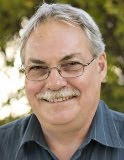This conversation starts with “How are your pennies doing?”
How do I answer that? I don’t call them pennies, I never have. They say CENT right on them so I know they are cents. Also, it’s large cents I collect, and specifically Victoria that I specialize in.
“They are great” I say, “I’m learning gobs from looking at them.”
My friend does market research for a living so she understands the concept of knowledge extraction from a data set. In my case this means that I’m laying out a group of coins for study, cataloging them in a normal fashion for grade, and then looking closer at each coin to determine its particular characteristics. These also get cataloged, the coin gets photographed if needed, markers noted and then the coin gets placed back in my ‘study’ binder in a fashion that I can find it again. Every few new dies I identify, I need to print of the new photographs and place them in the appropriate place in the growing catalog. This process of iteration takes quite some time to work through, but since there is no reference work for what I am doing this “catalog on the fly” approach does work. The bigger my catalog gets, the easier it is to identify what I find. The new die’s I discover get fewer and fewer the bigger my sample set grows.
“How will you share your results?” she asks. “You can’t keep that stuff to yourself; you need to spread the knowledge around.”
This causes a tangent discussion on published articles, e-books, good old hard copy, costs, barriers, publishers, market size, demand, need, apps, Twitter, blog’s, social networks, copyright, copyright infringement, and a host of other things. Eventually we roll back around to the coins. Actually it’s the people around the coins we talk about.
I have a network of friends that specialize in Vickies as well. We share thoughts and new finds back and forth. We proof each other’s work when we are getting ready to publish books or articles. We explore theories by exploring our coin sets against a hypothesis. But it’s the larger population, beyond the specialists that’s important. The bigger question for us is ‘what are we doing to share our knowledge’?
The more I’ve found ways to share what I know, the more I have received in return. I have met some wonderful collectors, specialists and friends. I have all sorts of people I interact with in discussion boards with funny screen names. I receive emails for people I’ve never met asking questions on Vickies. The more I share it seems, the more I get back in friendship, knowledge, perspective, opportunity and such. Only in a very few cases with a couple of people was it to my detriment to share. By and large the most rewarding aspect of what I do with my coins is sharing my knowledge.
My experience in this leads me to the following few points that I live by;
- Respect others intellectual and physical property
- Ask for help when you need it
- Share what you know in a manner you are comfortable with
- Write an article for a web site, RCNA Journal, local club newsletter etc.
- Introduce your children, grandchildren, nieces and nephews, the kid down the block etc. to your passion
- Share your finds, but never gloat
- Teach, you learn far more when you need to teach something to some one
- Never just take, always give back
So, how are your pennies doing? Find a way to let us all know what you are working on and what you have found.
 |
| 1876 Study group and developing catalog. The binder holds north of 500 coins all individually documented to build the growing catalog on the left. |

